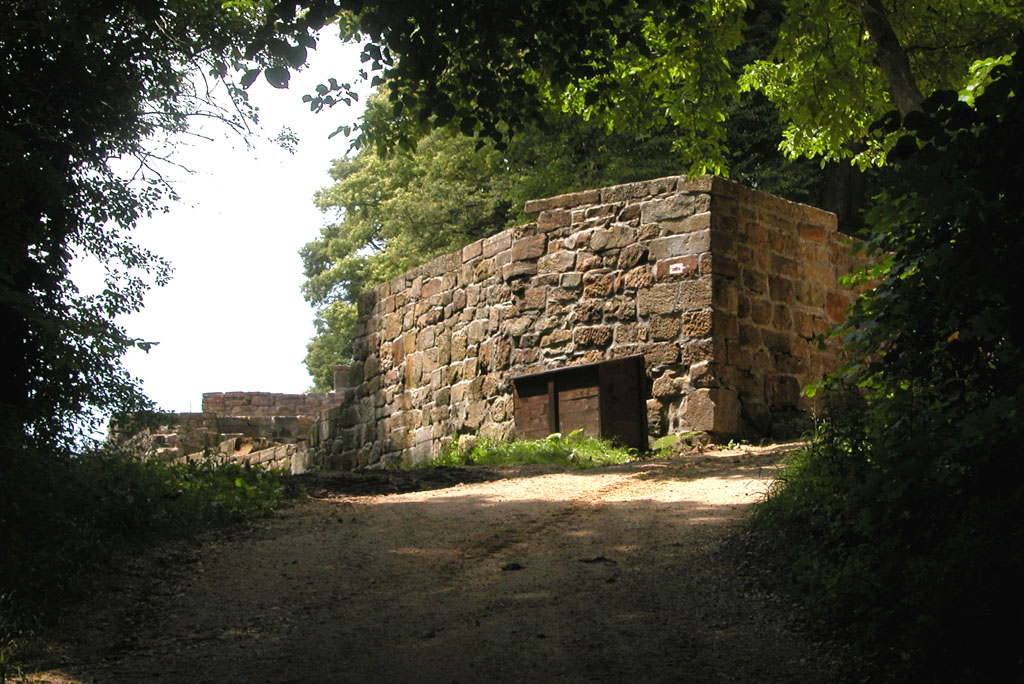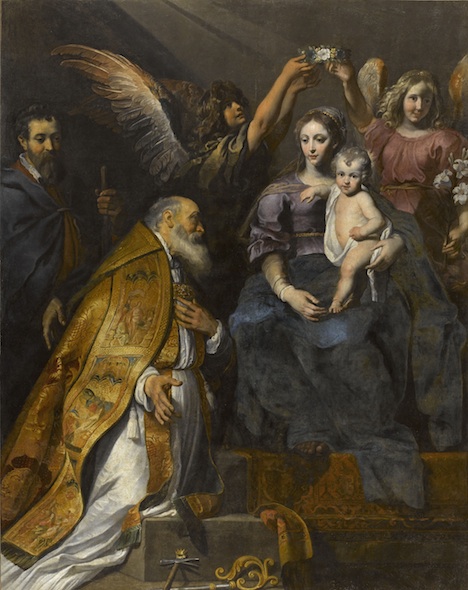|
Sant'Eligio Dei Chiavettieri
Sant'Eligio dei Chiavettieri (once known as ''Santa Maria ad Ercole'') is a Roman Catholic church in Naples, Italy, located at the intersection of via Cesare Sersale and vicoletto Chiavettieri al Pendino. History The church arose during the Swabian rule of Naples. The origin of the tag of ''Hercules'' is uncertain. Some suggests that the site once held a temple of Hercules while others claim a d'Ercole family of this street patronized the founding of the church. In the 15th century, the church was ceded to the guild of swordsmen (spadari) and then the confraternity of the locksmiths (chiavettieri o fabbricanti di chiavi), who rededicated the church to Sant'Eligio. In 1624, it became the home of the Congregation of ''Salvatore e di Santa Maria Materdei'', who redecorated it in baroque The Baroque ( , , ) is a Western Style (visual arts), style of Baroque architecture, architecture, Baroque music, music, Baroque dance, dance, Baroque painting, painting, Baroque sculpture, sculp ... [...More Info...] [...Related Items...] OR: [Wikipedia] [Google] [Baidu] |
Roman Catholic
The Catholic Church (), also known as the Roman Catholic Church, is the largest Christian church, with 1.27 to 1.41 billion baptized Catholics worldwide as of 2025. It is among the world's oldest and largest international institutions and has played a prominent role in the history and development of Western civilization. O'Collins, p. v (preface). The church consists of 24 ''sui iuris'' (autonomous) churches, including the Latin Church and 23 Eastern Catholic Churches, which comprise almost 3,500 dioceses and eparchies around the world, each overseen by one or more bishops. The pope, who is the bishop of Rome, is the chief pastor of the church. The core beliefs of Catholicism are found in the Nicene Creed. The Catholic Church teaches that it is the one, holy, catholic and apostolic church founded by Jesus Christ in his Great Commission, that its bishops are the successors of Christ's apostles, and that the pope is the successor of Saint Peter, upo ... [...More Info...] [...Related Items...] OR: [Wikipedia] [Google] [Baidu] |
Naples
Naples ( ; ; ) is the Regions of Italy, regional capital of Campania and the third-largest city of Italy, after Rome and Milan, with a population of 908,082 within the city's administrative limits as of 2025, while its Metropolitan City of Naples, province-level municipality is the third most populous Metropolitan cities of Italy, metropolitan city in Italy with a population of 2,958,410 residents, and the List of urban areas in the European Union, eighth most populous in the European Union. Naples metropolitan area, Its metropolitan area stretches beyond the boundaries of the city wall for approximately . Naples also plays a key role in international diplomacy, since it is home to NATO's Allied Joint Force Command Naples and the Parliamentary Assembly of the Mediterranean. Founded by Greeks in the 1st millennium BC, first millennium BC, Naples is one of the oldest continuously inhabited urban areas in the world. In the eighth century BC, a colony known as Parthenope () was e ... [...More Info...] [...Related Items...] OR: [Wikipedia] [Google] [Baidu] |
Italy
Italy, officially the Italian Republic, is a country in Southern Europe, Southern and Western Europe, Western Europe. It consists of Italian Peninsula, a peninsula that extends into the Mediterranean Sea, with the Alps on its northern land border, as well as List of islands of Italy, nearly 800 islands, notably Sicily and Sardinia. Italy shares land borders with France to the west; Switzerland and Austria to the north; Slovenia to the east; and the two enclaves of Vatican City and San Marino. It is the List of European countries by area, tenth-largest country in Europe by area, covering , and the third-most populous member state of the European Union, with nearly 59 million inhabitants. Italy's capital and List of cities in Italy, largest city is Rome; other major cities include Milan, Naples, Turin, Palermo, Bologna, Florence, Genoa, and Venice. The history of Italy goes back to numerous List of ancient peoples of Italy, Italic peoples—notably including the ancient Romans, ... [...More Info...] [...Related Items...] OR: [Wikipedia] [Google] [Baidu] |
Eligio Chiavettieri
Eligio is an Italian, Portuguese and Spanish given name. Notable people with the name include: Given names *Eligio Ancona (1835–1893), Mexican politician *Eligio Ayala (1879–1930), former president of Paraguay * Eligio Caracciolo (1654–1700), Italian Roman Catholic prelate * Eligio Cedeño (born 1964), Venezuelan banker * Eligio Cervantes (born 1974), Mexican athlete * Eligio Echagüe (1938–2009), Paraguayan footballer * Eligio González Farías (born 1977), Mexican politician * Eligio de la Garza II (1927–2017), American politician * Eligio Insfrán (born 1935), Paraguayan footballer * Eligio Lofranco (born 1943), Filipino lawyer * Eligio Martínez (born 1955), Bolivian footballer *Eligio Esquivel Méndez (1908–1964), Mexican politician and engineer *Eligio Sardiñas Montalvo (1910–1988), Cuban boxer *Eligio Perucca (1890–1965), Italian physics instructor and researcher *Eligio Pichardo (1929–1984), painter from the Dominican Republic *Eligio de la Puente (1724–17 ... [...More Info...] [...Related Items...] OR: [Wikipedia] [Google] [Baidu] |
House Of Hohenstaufen
The Hohenstaufen dynasty (, , ), also known as the Staufer, was a noble family of unclear origin that rose to rule the Duchy of Swabia from 1079, and to royal rule in the Holy Roman Empire during the Middle Ages from 1138 until 1254. The dynasty's most prominent rulers – Frederick I (1155), Henry VI (1191) and Frederick II (1220) – ascended the imperial throne and also reigned over Italy and Burgundy. The non-contemporary name of 'Hohenstaufen' is derived from the family's Hohenstaufen Castle on Hohenstaufen mountain at the northern fringes of the Swabian Jura, near the town of Göppingen. Under Hohenstaufen rule, the Holy Roman Empire reached its greatest territorial extent from 1155 to 1268. Name The name Hohenstaufen was first used in the 14th century to distinguish the 'high' (''hohen'') conical hill named Staufen in the Swabian Jura (in the district of Göppingen) from the village of the same name in the valley below. The new name was applied to the hill castle ... [...More Info...] [...Related Items...] OR: [Wikipedia] [Google] [Baidu] |
Hercules
Hercules (, ) is the Roman equivalent of the Greek divine hero Heracles, son of Jupiter and the mortal Alcmena. In classical mythology, Hercules is famous for his strength and for his numerous far-ranging adventures. The Romans adapted the Greek hero's iconography and myths for their literature and art under the name ''Hercules''. In later Western art and literature and in popular culture, ''Hercules'' is more commonly used than ''Heracles'' as the name of the hero. Hercules is a multifaceted figure with contradictory characteristics, which enabled later artists and writers to pick and choose how to represent him. This article provides an introduction to representations of Hercules in the later tradition. Mythology Birth and early life In Roman mythology, although Hercules was seen as the champion of the weak and a great protector, his personal problems started at birth. Juno sent two witches to prevent the birth, but they were tricked by one of Alcmene's servants and se ... [...More Info...] [...Related Items...] OR: [Wikipedia] [Google] [Baidu] |
Saint Eligius
Eligius (; 11 June 588 – 1 December 660), venerated as Saint Eligius, was a Frankish goldsmith, courtier, and bishop who was chief counsellor to Dagobert I and later Bishop of Noyon–Tournai. His deeds were recorded in ''Vita Sancti Eligii'', written by his friend Audoin of Rouen. Born into a Gallo-Roman family, Eligius found success as a goldsmith at the Merovingian royal court of Clotaire II and served as chief counsellor to Dagobert I until Dagobert's death in 639. Under the subsequent regency of Nanthild, the queen consort, Eligius was ordained a priest and campaigned against simony in the Church. Appointed Bishop of Noyon–Tournai in 642, he founded many monasteries and churches while working to convert the pagan population of Flanders to Christianity. Despite his background as a goldsmith, Eligius became increasingly ascetic during his time at the royal court and used his influence to ransom captive slaves and care for the poor. A legend emerged of him once he ... [...More Info...] [...Related Items...] OR: [Wikipedia] [Google] [Baidu] |
Baroque
The Baroque ( , , ) is a Western Style (visual arts), style of Baroque architecture, architecture, Baroque music, music, Baroque dance, dance, Baroque painting, painting, Baroque sculpture, sculpture, poetry, and other arts that flourished from the early 17th century until the 1750s. It followed Renaissance art and Mannerism and preceded the Rococo (in the past often referred to as "late Baroque") and Neoclassicism, Neoclassical styles. It was encouraged by the Catholic Church as a means to counter the simplicity and austerity of Protestant architecture, art, and music, though Lutheran art#Baroque period, Lutheran Baroque art developed in parts of Europe as well. The Baroque style used contrast, movement, exuberant detail, deep color, grandeur, and surprise to achieve a sense of awe. The style began at the start of the 17th century in Rome, then spread rapidly to the rest of Italy, France, Spain, and Portugal, then to Austria, southern Germany, Poland and Russia. By the 1730s, i ... [...More Info...] [...Related Items...] OR: [Wikipedia] [Google] [Baidu] |
Polito Del Donzello
Ippolito del Donzello (1455 – ?) was an Italian painter and architect of the Quattrocento, active mainly in Naples. Biography Ippolito (or Polito) and his half-brother Piero were the sons of Francesco d'Antonio di Jacopo, bailiff ('donzello') of the Signoria of Florence, and were both born in that city — Piero in 1451, and Ippolito in 1455. Ippolito was the pupil of Neri di Bicci from 1469 to 1471, and the brothers were companions in the same atelier in Florence up to 1480. In 1481, or soon after, they went to Naples to decorate the palace of Poggio Reale, which was then being built for Alfonso I, from the designs of Giuliano da Majano, and it is not unlikely that Ippolito died in that city, but the death of Ippolito is not registered. Ippolito and Pietro both assisted Antonio Solario, called II Zingaro, in the frescoes in the cloisters of the monastery of San Severino at Naples, and in the National Museum of Capodimonte Museo di Capodimonte is an art museum located in ... [...More Info...] [...Related Items...] OR: [Wikipedia] [Google] [Baidu] |




